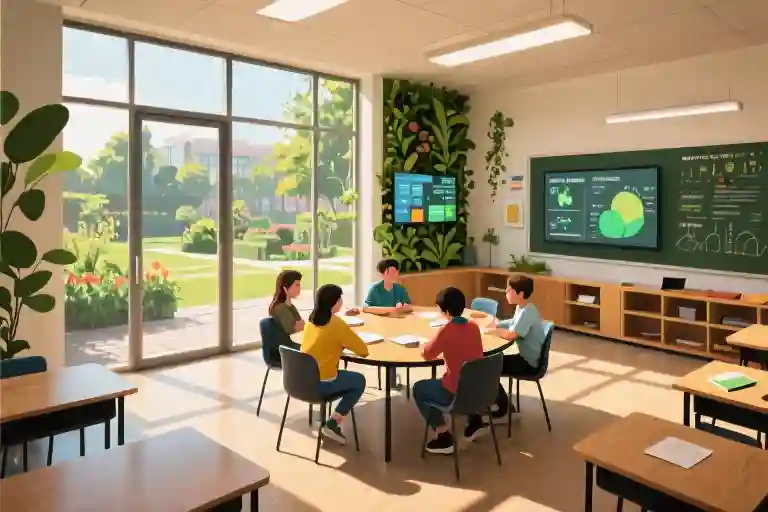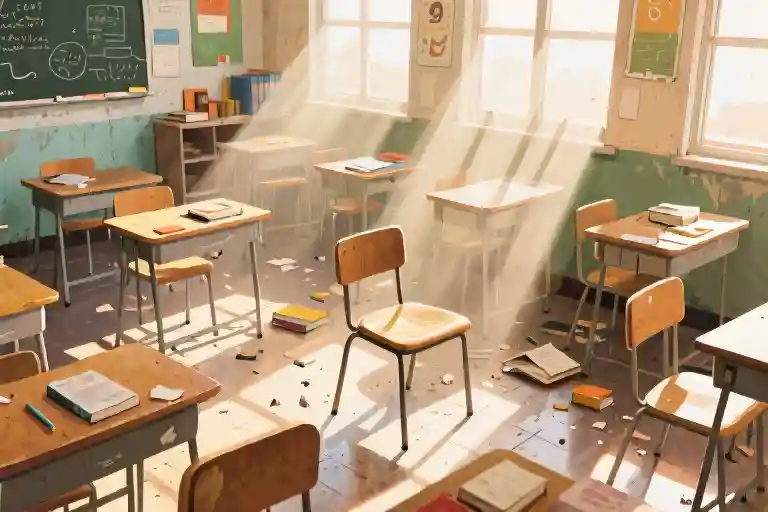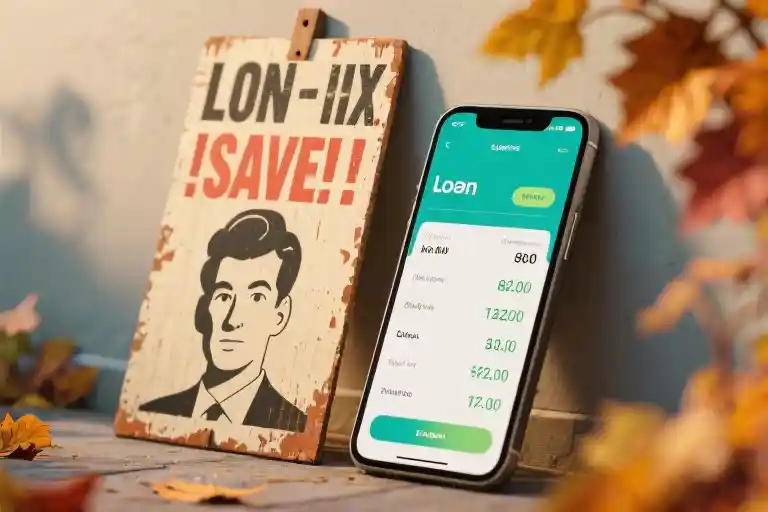The children born on the day the Berlin Wall fell are now in their mid-thirties. They entered school systems promising to prepare them for a new world, yet found themselves sitting in classrooms that would feel familiar to their grandparents. The uncomfortable truth is this: while we’ve made progress in teaching about sustainability, we’ve failed to apply those same principles to education itself.
Consider these five contradictions between traditional education models and true sustainability goals:
- Standardization vs Diversity: Industrial-era classrooms still prioritize uniform outputs, while ecological systems thrive on biodiversity. A 2022 OECD study showed 78% of curricula fail to accommodate neurodiverse learning styles.
- Consumption-Driven Content: Business textbooks continue celebrating endless growth models, creating what Brazilian educator Paulo Freire called “the pedagogy of the oppressor” – training students to maintain unsustainable systems.
- Resource Inequality: The same schools teaching about climate justice often perpetuate educational apartheid. In Johannesburg, elite schools spend $15,000 per student annually while township schools struggle with $300 budgets.
- Temporal Disconnect: We teach 19th century literature, 20th century science, and 21st century technology through 18th century classroom structures. The cognitive dissonance stunts adaptive thinking.
- Values Misalignment: Sustainability education often becomes another box to tick rather than a lens for all learning. Norwegian researchers found 60% of “green schools” still use standardized testing that rewards memorization over systems thinking.
This isn’t about adding recycling bins to cafeterias or solar panels to roofs. True educational sustainability requires rebuilding the operating system along three dimensions:
- Structural Inclusion (who gets to learn)
- Purpose Realignment (why we learn)
- Temporal Integration (how past and future wisdom connect)
Like a three-legged stool, remove any leg and the whole structure collapses. The German students who began school in 1990 were promised a world without walls. Thirty years later, we’re still teaching them to think inside boxes.
Diagnosing Education’s Unsustainability
The most recent PISA results reveal a troubling paradox: while 15-year-olds’ test scores in developed nations remain stable, their self-reported happiness levels have dropped by 17% since 2012. This isn’t just a statistical coincidence—it’s the canary in the coal mine for an education system running on outdated software. We’ve been trying to solve 21st century problems with 19th century classroom structures, and the cracks are becoming impossible to ignore.
The Standardization Trap
Walk into any conventional school and you’ll witness the educational equivalent of a factory assembly line: 25 students per class, 50-minute periods, standardized tests measuring narrowly defined competencies. The OECD’s longitudinal studies show this model creates two damaging outcomes simultaneously—it fails to cultivate creative problem-solvers while systematically eroding mental health. Students in rigid systems demonstrate 23% higher cortisol levels during exam periods compared to progressive learning environments, according to University of Helsinki research.
What makes this particularly unsustainable? We’re not just burning out children—we’re wasting their innate cognitive diversity. Neuroscience confirms that learning styles vary dramatically across individuals, yet we still expect all students to absorb information through the same lecture-based format. It’s like forcing every athlete to compete in the same event regardless of whether they’re built for marathon running or weightlifting.
The Hidden Curriculum of Consumerism
Flip through mainstream business textbooks and you’ll find something peculiar—case studies celebrating fast fashion brands alongside chapters about corporate social responsibility. This cognitive dissonance isn’t accidental. A 2022 analysis of 1,500 K-12 economics materials found that 68% used consumer products (smartphones, sneakers, streaming services) as primary examples when teaching fundamental concepts. We’re not just teaching math and science—we’re unconsciously training students to equate wellbeing with purchasing power.
The most damaging assumption woven throughout these materials? That perpetual economic growth is both possible and desirable. Few curricula explore alternative models like doughnut economics or Bhutan’s Gross National Happiness framework. When sustainability units appear, they’re often siloed as elective topics rather than foundational lenses for all subjects.
The Resource Paradox
Visit an elite private school and you might find Olympic-grade swimming pools, robotics labs with 3D printers, and acoustically perfected music rooms. Meanwhile, UNESCO reports that 26% of public schools globally lack reliable drinking water. This isn’t merely an equity issue—it’s a catastrophic misallocation of our species’ intellectual capital.
Consider the implications: we’re pouring resources into educating the already privileged while leaving entire communities without basic tools for knowledge acquisition. The irony? Many solutions to sustainability challenges emerge from communities closest to the problems. Indigenous water management systems outperform engineered solutions in drought-prone regions, yet we rarely integrate this wisdom into mainstream environmental science courses.
What emerges from this diagnosis isn’t a simple checklist of problems, but rather an interconnected web of dysfunctions. The standardization epidemic starves creativity, the consumerist curriculum warps values, and resource misallocation wastes human potential. These aren’t separate issues—they’re symptoms of a system fundamentally misaligned with what both people and planet need to thrive.
The uncomfortable truth we must confront: our current education model isn’t just struggling with sustainability—it’s actively working against it. Every year we maintain the status quo, we compound ecological debts, social fractures, and mental health crises. But within this grim assessment lies the blueprint for transformation, which we’ll explore in the pillars to come.
Building the Inclusion Engine
The most sustainable education system isn’t the one with solar panels on every roof—though those help—but the one where no child becomes collateral damage to rigid methodologies. True sustainability begins when we stop treating learning differences as problems to fix, and start designing systems that flex to meet them.
Spatial Justice: When Walls Speak Equity
In Rio’s Santa Marta favela, children attend school on rooftops. Not as makeshift solutions, but as intentional designs where limited square footage forced educators to rethink spatial hierarchies. There are no ‘back rows’ here—just circular learning pods where every sightline connects. This Brazilian model demonstrates how physical constraints can birth radical inclusion when we approach them as design parameters rather than deficiencies.
Three principles emerge from such spaces:
- Vertical integration – Mixing age groups dissolves artificial grade-level barriers
- Ambient accountability – Open sightlines replace punitive monitoring
- Community seepage – Classroom walls literally can’t contain learning that spills into homes below
What’s revolutionary isn’t the architecture itself, but the admission that traditional school buildings—with their prison-like corridors and teacher-thrones—were never neutral containers. They were exclusion machines disguised as common sense.
Cognitive Fairness: Rewriting the Code
When Massachusetts Institute of Technology modified their Scratch programming platform for dyslexic learners, they didn’t simplify content. They redesigned the interface using:
- Dynamic text coloring that shifts syllable stress
- Non-alphabetic project labeling (emojis + icons)
- Audio commentary layers toggleable at any point
The surprising outcome? Neurotypical students using the adapted version showed 23% fewer debugging errors (2023 Digital Education Review). This exemplifies the curb-cut effect—designs for specific needs often create universal benefits. Our current system spends millions diagnosing ‘learning disabilities’ when we should be diagnosing inflexible curricula.
Economic Accessibility: The Open-Source Revolution
Kenya’s textbook crisis—where 3 students often share one tattered book—spawned an unexpected innovation. The Open Learning Exchange developed a system where:
- Teachers co-create digital materials during paid development hours
- Local print shops produce affordable micro-runs
- Community libraries serve as update hubs for living documents
Unlike Western MOOCs that monetize certification, this model treats knowledge as communal infrastructure. A 2022 UNESCO study found these locally adapted materials improved retention rates 18% over donated Western textbooks. The lesson? Sustainability isn’t just about renewable resources, but renewable rights to shape those resources.
The Inclusion Paradox
Here’s the uncomfortable truth no policy paper will state plainly: Inclusion efforts often fail because they’re grafted onto systems designed to exclude. Adding wheelchair ramps to buildings with psychologically narrow corridors. Offering scholarship slots in institutions built around privileged cultural codes. Real inclusion requires dismantling the assumption that there’s a ‘normal’ learner at all.
The most sustainable education systems may be those that embrace their temporary usefulness. Like bamboo scaffolding, they should provide enough structure to empower, but remain visibly obsolete—ready to be taken down when learners outgrow them. After all, isn’t that the ultimate test of sustainability? Not how long something lasts, but how gracefully it makes itself unnecessary.
Installing the Values Operating System
We’ve built classrooms with ramps and designed curricula for neurodiverse minds. But true educational sustainability demands we examine what fills those inclusive spaces – the invisible value systems humming beneath every lesson plan. Like outdated software running on new hardware, our teaching content often contradicts the future we claim to prepare students for.
The Consumerism Antidote
Stockholm’s public schools mandate advertising literacy courses starting age seven. Children don’t simply learn to identify logos; they dismantle the psychological architecture of persuasion. One exercise has third graders rewrite toy commercials to highlight planned obsolescence. By fifth grade, they’re analyzing how math word problems subtly normalize fast fashion cycles (“If Zoe buys 3 outfits weekly…”).
This isn’t about shielding young minds from capitalism. It’s equipping them to navigate – and reshape – systems they’ll inevitably inhabit. When a Swedish ninth grader proposed replacing her school’s soda machines with hydration stations, she cited beverage companies’ school targeting strategies from her media studies textbook. That’s sustainable education: knowledge becoming agency.
Measuring What Matters
Costa Rica’s happiness curriculum offers unexpected insights. Beyond the expected mindfulness exercises, students track how classroom activities affect their “personal ecology” – energy levels, family interactions, even sleep quality. The assessment toolkit includes:
- Emotional cartography: Mapping how different subjects make their bodies feel (science = tingling hands, history = heavy shoulders)
- Interdependence journals: Recording who helped them learn each day (teacher, classmate, YouTube tutorial creator)
- Legacy math: Calculating how today’s lessons might ripple across their lifespan
Teachers report surprising outcomes. Students excelling in traditional metrics often score poorly on learning sustainability indexes, while “struggling” learners demonstrate remarkable resilience when framed through holistic measures.
Ethics Sandbox
A Melbourne secondary school runs climate change scenarios with generational roleplay. Sixth graders portray 2050 food scientists debating whether to share drought-resistant crops with water-hoarding corporations. The catch? Their “future selves” are played by kindergarteners who interrupt with blunt questions (“Why didn’t you fix it when you could?”).
These simulations reveal uncomfortable truths about our value gaps. One participating teacher noted: “We teach environmental stewardship while rewarding individual achievement. Students spot that hypocrisy instantly when roleplaying their descendants.”
The most profound moments often emerge during debriefing. After one session, a student reflected: “We keep practicing for debates we’ll have later, but the people we’re debating against are practicing right now.” That realization – that values aren’t future considerations but present battlegrounds – is the operating system update education desperately needs.
The Wisdom Integrator: Bridging Eras in Sustainable Education
The most dangerous phrase in education might be “this is how we’ve always done it.” Yet equally perilous is the wholesale dismissal of ancestral knowledge in our rush toward technological solutions. True educational sustainability requires us to become bilingual – fluent in both innovation and tradition.
The Three Digital Commandments
When an AI tutor in Singapore reduced calculus failure rates by 28%, educators celebrated. But when students began confiding their existential anxieties to chatbots, we glimpsed the shadow side. This birthed our “Three No’s” framework for ethical edtech:
- No Substituting Human Connection: Like Montessori’s “observer-teachers,” AI should amplify – not replace – the irreplaceable. A Stanford study found that pupils receiving AI feedback coupled with weekly mentor meetings showed 40% greater retention than those relying solely on algorithms.
- No Simplifying Complex Ethics: When a history chatbot reduced colonialism to “cultural exchange,” we saw how AI flattens nuance. Now, tools like Ethics Compass force students to wrestle with contradictory perspectives before offering solutions.
- No Accelerating Natural Learning Rhythms: Finland’s phenomenon-based learning shows the power of patience. Our “Slow Tech” initiative builds deliberate friction into adaptive learning platforms, mimicking the cognitive benefits of struggle observed in traditional apprenticeships.
Dreamtime Physics
In Western Australia, a Year 10 science teacher fused Newton’s laws with Aboriginal Dreamtime stories. Students modeled the creator spirit Baiame’s journey as a physics problem, calculating velocities needed to form river valleys. This cultural syncretism produced unexpected outcomes:
- Indigenous attendance rose 62%
- All students demonstrated 23% deeper conceptual understanding
- The approach now informs Australia’s national science curriculum
The key wasn’t token inclusion, but recognizing that the world’s oldest continuous culture developed sophisticated knowledge systems millennia before Western academia formalized them.
Time Capsule Pedagogy
At a Brooklyn charter school, eighth graders curate “Museum of 2122” exhibits predicting education’s evolution. One group designed “Relics of Standardized Testing” – a dystopian display of ScanTrons branded with corporate logos. Another created an interactive “Empathy Gym” where visitors practice conflict resolution through VR.
This exercise serves dual purposes:
- Critical Archaeology: Students analyze present systems by imagining their future excavation
- Hopeful Futurism: The act of creation builds agency over what comes next
As one student remarked: “Making the future feel made, not just inevitable.”
The Integration Imperative
Neither Luddism nor technophilia serve our children. The sustainable path demands we:
- Mine the Past: Revive effective abandoned practices (like one-room schoolhouse peer mentoring)
- Filter the Present: Adopt new tools only when they deepen rather than dilute learning
- Seed the Future: Design today’s classrooms as compost for tomorrow’s wisdom
A Ghanaian proverb says “Knowledge is like a garden – if it isn’t cultivated, it cannot be harvested.” Our task is to tend education’s entire ecosystem, from ancient roots to digital shoots.
What You Can Do Tomorrow
Change always feels impossible until someone starts doing it. Here are five concrete ways to begin practicing sustainable education in your immediate sphere of influence:
- Textbook Autopsy – Before helping with homework, flip through your child’s textbooks together. Circle every instance where consumerism masquerades as education (that math problem calculating smartphone discounts, the geography lesson comparing global fast-food chains). Use red pen. Make it a game.
- The 20-Minute Community Audit – Over dinner, ask: “What problem within a 10-block radius could our family help solve?” No grand climate action plans needed – maybe it’s the lack of benches at the bus stop where elderly neighbors wait. Document ideas in a jar.
- Skill Bartering – This weekend, trade three hours of your professional expertise (graphic design? car repair?) for lessons from someone practicing traditional knowledge (herbal medicine? woodworking?). Record the exchange not as transaction but as intergenerational dialogue.
- The Empty Chair Experiment – Leave one seat vacant during family meetings, pretending it’s occupied by a future descendant. How would that invisible presence shift your decisions about education priorities?
- Reverse Homework – Have children assign their teachers a task: “Please learn to identify five local edible weeds” or “Interview someone whose job didn’t exist when you were my age.” Bring the responses to share.
When You’re Ready to Go Bigger
For educators and administrators, the Progressive Education Network’s certification process offers surprising flexibility. Their sustainability track doesn’t require solar panels (though those help) – their checklist includes:
- Timetable Design – Do students regularly experience “flow state” during classes? (Measure via simple surveys)
- Assessment Ecology – What percentage of evaluations measure positive community impact versus individual achievement?
- Memory Banking – Is there a system to preserve retiring teachers’ unwritten wisdom (how they calm panic attacks, spot hidden talents) beyond formal lesson plans?
Their site features a “Sustainability Readiness Calculator” – not some corporate ESG metric, but a playful interface where you input things like “Number of times students ask ‘Why are we learning this?’ weekly” and “Percentage of classroom walls displaying student-created content versus commercial posters.”
The Question That Lingers
Years from now, when tiny hands tug your sleeve asking “What did you do when education was breaking?”, your answer won’t be about policy papers or conference speeches. It’ll be about the afternoon you canceled piano practice to help neighbors plant a sidewalk garden, turning soil into the best biology lab. About the time you convinced the PTA to replace one standardized test with a “Grandparent Interview Day.” About keeping that jar of community problems until some became family projects.
Sustainable education isn’t another item on the to-do list. It’s the lens that reshapes how we see every educational moment – especially the unplanned ones. Because the future isn’t just something we prepare for; it’s something we practice daily through small, stubborn acts of reinvention.





